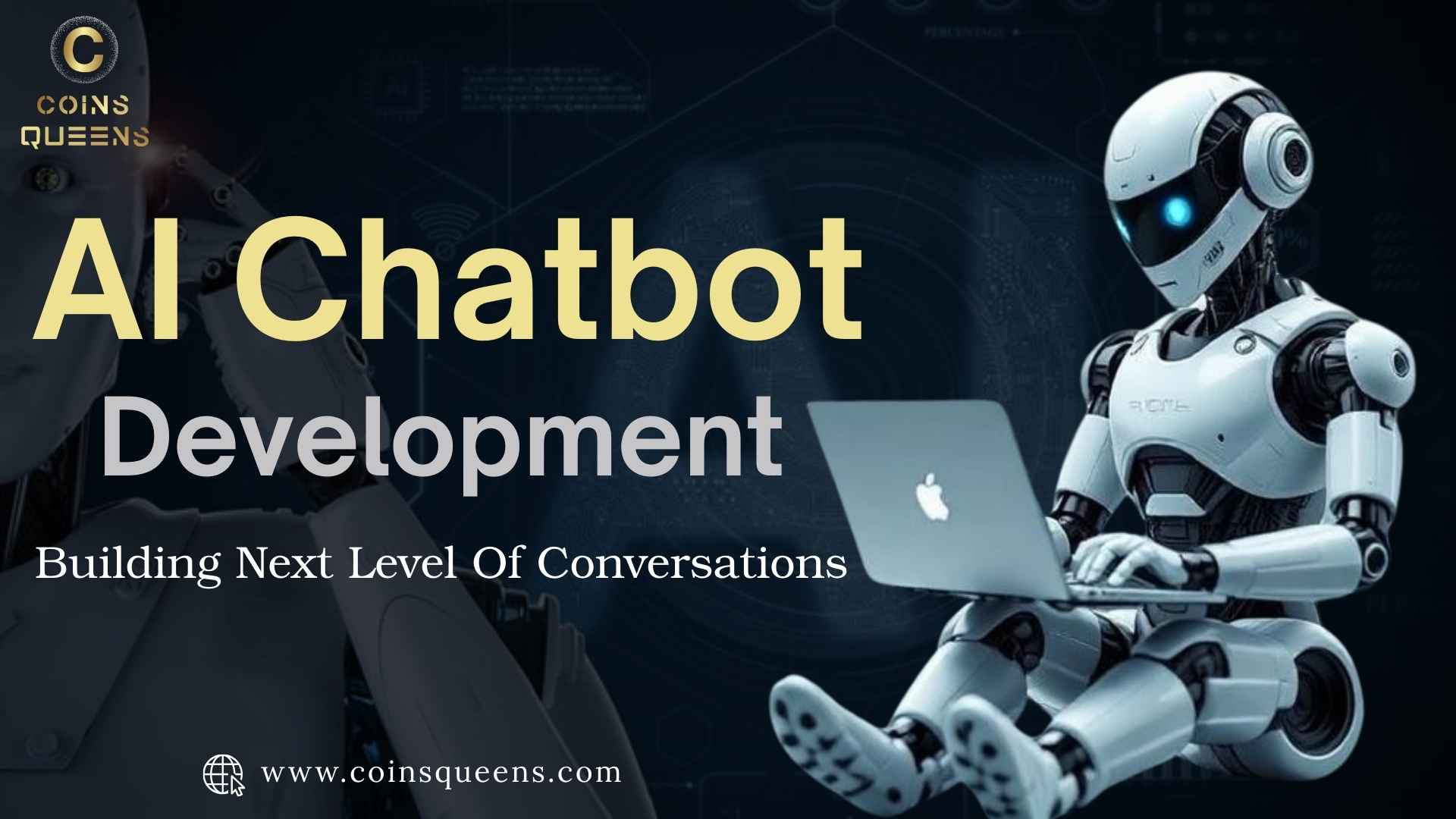The use of chatbots in business is expanding. It has become a widely used saying in business. This type of technology is in demand right now since it provides a completely functional customer support solution.
A chatbot service enables a company to communicate with a million customers effectively, improving communication and customer experience. Because providing a better customer experience is harder than ever, many organizations have needed to build a highly functional chatbot.
In this post, we will give you the information and tools you require to help you create a chatbot for your business.
Let’s dive in to know.
An Intro to AI Chatbot:
An AI chatbot is like a smart computer friend that can talk to you just like a real person, but it’s a computer program. It’s called “AI” because it uses Artificial Intelligence to learn and understand how to have conversations with people.
Imagine you have a question or need help with something, like finding information online, ordering food, or even having a friendly chat. You can simply type or speak to the chatbot, and it will do its best to understand what you’re saying and give you helpful answers or advice.
Chatbots are used in many places today, like on websites to provide customer support, in messaging apps to help you with tasks, or even in voice-activated devices like smart speakers.
They’re designed to make your life easier by being available 24/7 and ready to assist with a wide range of tasks. So, think of an AI chatbot as your digital buddy who is always ready to chat and help!
Integration with External Systems using AI:
When it comes to making your AI chatbot truly versatile and powerful, integrating it with external systems is a game-changer.
Think of it as giving your chatbot access to a treasure trove of information and functionalities beyond its capabilities.
Integration means connecting your chatbot to databases, software applications, and online services. This allows your chatbot to pull in real-time data or perform tasks it couldn’t do on its own.
For instance, if you have an e-commerce chatbot, it can connect to your product database to provide up-to-date information on prices and availability.
Moreover, integrating with external systems enhances user experiences. Users can check the weather, book a table at a restaurant, or even make payments, all without leaving the chat interface.
The beauty of this integration is that it’s flexible and customizable. You can connect your chatbot to whatever systems are relevant to your business or users’ needs.
Types of AI Chatbots:
AI chatbots come in various flavours, each with its unique features and capabilities. Understanding the different types of chatbots is like knowing your options when choosing a tool for a specific job.
Here, we’ll explore some common types in simple terms:
Rule-Based Chatbots:
Imagine these chatbots as following a strict set of rules, like a flowchart. They respond based on predefined rules and keywords. They’re great for basic tasks and FAQs.
Machine Learning Chatbots:
Machine Learning chatbots are like eager learners. They get better with time, using machine learning to understand and respond to user inputs. They’re more flexible and adaptable.
Voice and Text Chatbots:
Some chatbots communicate through text, like in messaging apps, while others can speak to you, like Siri or Alexa. They’re tailored for different interaction styles.
Virtual Assistants:
Think of virtual assistants as personal helpers. They can perform tasks beyond answering questions, like setting reminders, sending emails, or controlling smart devices.
Social Media Chatbots:
Often found on platforms like Facebook Messenger, these chatbots engage with users on social media, offering customer support or information.
Knowing the type of chatbot that suits your needs is crucial for successful implementation, ensuring your chatbot effectively serves its purpose.
Designing Conversational Flows:
Certainly, here are some key points:
Plan the Path:
Just like a map, plan out the different routes users might take during a chat with your AI chatbot.
Keep it Logical:
Make sure the chatbot’s responses flow logically from one question or statement to the next, avoiding sudden jumps in topics.
User-Centered Design:
Focus on what users need and want. Ask questions to understand their intent and provide helpful responses.
Test and Iterate:
Continuously test your conversational flows with real users and gather feedback to improve the chatbot’s performance.
Personalization:
If possible, tailor the conversation based on user preferences or past interactions to make it more relevant and engaging.
By following these points, you can design conversational flows that provide users with a seamless and enjoyable experience when interacting with your AI chatbot.
Advanced AI Features in AI Chatbot Development:
Here elaborated the advanced AI Features below,
Context-Awareness:
Chatbots with context-awareness can remember and reference previous parts of a conversation. This feature enhances the coherence and continuity of interactions, making conversations feel more natural and engaging.
Voice Recognition:
Advanced chatbots can understand and process spoken language, enabling users to interact through voice commands or speech. Voice recognition adds convenience and accessibility to the chatbot experience.
Multilingual Capabilities:
Multilingual chatbots can communicate in multiple languages, broadening their reach and making them suitable for a global audience. This feature is especially valuable for businesses with international customers.
Predictive Analytics:
Advanced chatbots can use historical data and predictive analytics to anticipate user needs and provide proactive assistance.
Enhanced Security:
AI features can also bolster security by identifying potential security threats or unusual user behaviour, helping protect sensitive information during interactions.
These advanced AI features elevate chatbots from simple automated responders to sophisticated, human-like conversational agents capable of providing personalized, context-aware, and emotionally intelligent interactions.
Benefits of AI Chatbot Development:
-
Better artificial intelligence capabilities are being included by businesses in chatbots to address the particular problems that customers raise and to address increasingly difficult questions.
-
For apps and social media channels, primarily Facebook and brand websites, chatbots are now used as an omnichannel response system.
-
Businesses are available around the clock to service their clients.
-
Businesses can anticipate customer behaviour by using chatbots. They can enhance their services by providing clients with more options, such as paying or receiving information about their orders.
-
Chatbots can be helpful for businesses with high call volumes since they add another line of communication.
Future Trends of AI Chatbot Development:
The world of chatbot development is always evolving, and staying ahead of the curve is crucial. Let’s take a peek into the future of chatbots and see what exciting trends are on the view.
One big trend is chatbots in augmented reality (AR) and virtual reality (VR). Imagine chatting with a virtual assistant in a 3D environment. It’s like having a cursive helper right in front of you, which can revolutionize education, gaming, and remote collaboration.
Another exciting development is emotion-aware chatbots. These bots will not only understand your words but also detect your emotions through voice tone or text. They can offer comfort when you’re sad or celebrate with you when you’re happy, making interactions more human-like.
Furthermore, we can expect more multilingual chatbots, breaking down language barriers effortlessly. Additionally, AI chatbots will become even more integrated into our daily lives, assisting with tasks like healthcare monitoring, financial advice, and mental health support.
As technology keeps advancing, the possibilities are endless. The future of chatbots is bright, promising more personalized, immersive, and helpful experiences for all of us.
Wrapping Up:
The future of chatbot development holds exciting possibilities. We’re moving towards 3D chatbots in AR and VR, making interactions more immersive.
Emotion-sensing chatbots will understand our feelings, making them more human-like. Language won’t be a barrier as multilingual chatbots become common.
These AI assistants will play bigger roles in our lives, helping with healthcare, finances, and mental well-being.
With advancing technology, chatbots are becoming our trusted companions, offering immersive, and helpful experiences. The future is bright, and it’s an exciting time to be part of the world of AI Chatbot Development.
We hope you’re now well-informed about AI Chatbot Development! Don’t hesitate, let’s embark on this journey together.
CoinsQueens stands out as the premier AI Chatbot Development Company in the industry. We specialize in crafting cutting-edge AI solutions, including chatbots, and excel in NFT solutions, Crypto Exchange Software, Fintech Development, as well as advanced technologies like AR&VR Development, and more.
Our track record speaks volumes, with over 250 successful projects delivered worldwide. This is the time to turn your aspirations into tangible achievements!
Connect with our experts today and witness the transformation in AI Chatbot Development.
Good luck with your business!











